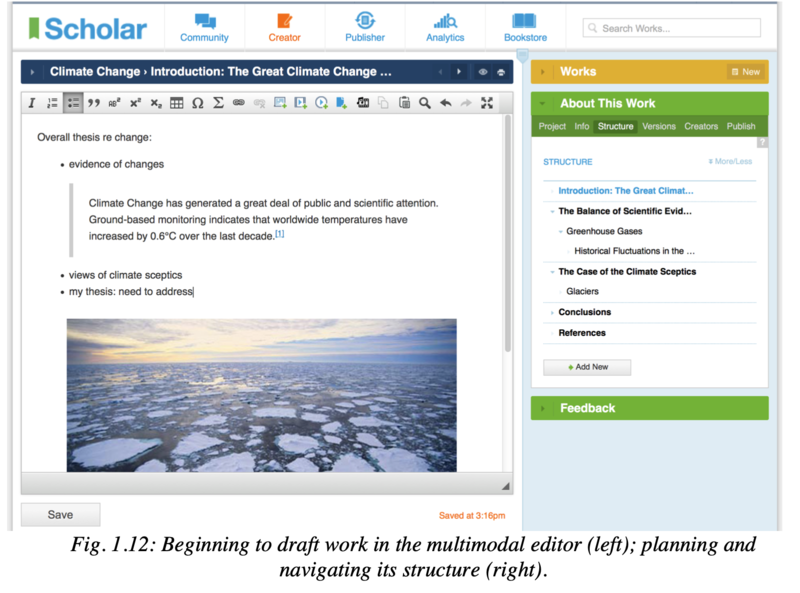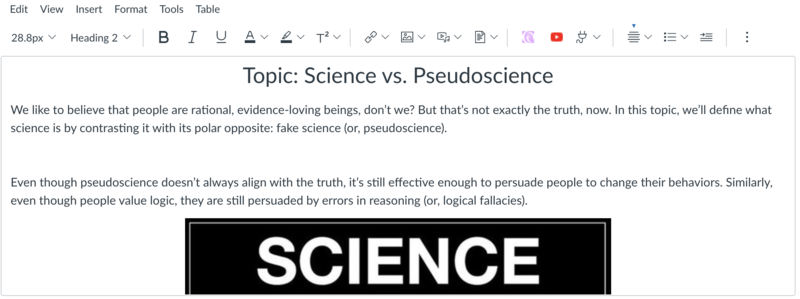e-Learning Ecologies MOOC’s Updates
Multiple Roads Lead to Metacognition
Multimodal Knowledge Representations
Now that I have participated in this online course, I see the connection between multimodal knowledge representations and metacognition. In Cope & Kalantzis’ chapter on “Conceptualizing e-Learning,” I found out how to apply the digital revolution to learner’s agency. The authors describe their “semantic editor” (p. 27) on Scholar’s “Creator” function (see attached Figure 1.12). This is where students take the helm and engage in creating, producing, and designing knowledge representations. Students can do what I do in my LMS every week, which is design digital lesson plans complete with text, images, mathematical formulas, YouTube videos, SoundCloud audios, or any other data type (see attached Figure 2). With multiple modes, they are afforded multiple opportunities to communicate their ideas with cogency. Instead of submitting a homework assignment that has a simple link and no explanation (argh!), they can design a content page that features an embedded video and keep going with written words, visual memes, and audio clips until they are satisfied that they’ve illustrated their point on a page that they’re in control of rather than sending a link into hyperspace that they never see again.
As our learners become amateur digital designers, they are also prompted to be explicit in their own metacognition. Where do they choose to “emphasize” a word or phrase? Metacognitively, this reveals to us what they think is significant about their lesson, where their attention has been drawn, and where they believe information should be prioritized. Where do they choose to insert a “block quote”? That means they can think about where to take a break from their voice and bolster it. Here, they can practice critical thinking skills and evaluate how much of their content is original and how much is outsourced. And, much to the joy of universal design and accessibility, where do learners choose to use the “structure” tool to insert headings? In this way, they’re making connections between and among concepts clear to themselves and their readers. I see this as an obvious way to teach this transferable skill to essay writing! According to our lecture videos, this type of synesthesia allows students to learn through the process of switching from one mode to another. While the idea of teaching metacognition is not new, the multimodal knowledge representations are novel methods for providing the conditions to foster agency and executive functions.




I like the idea that the use of multiple semiotic resources to convey meaning and organize information makes it possible to bring to the surface knowledge-makers' underlying metacognitive processes.